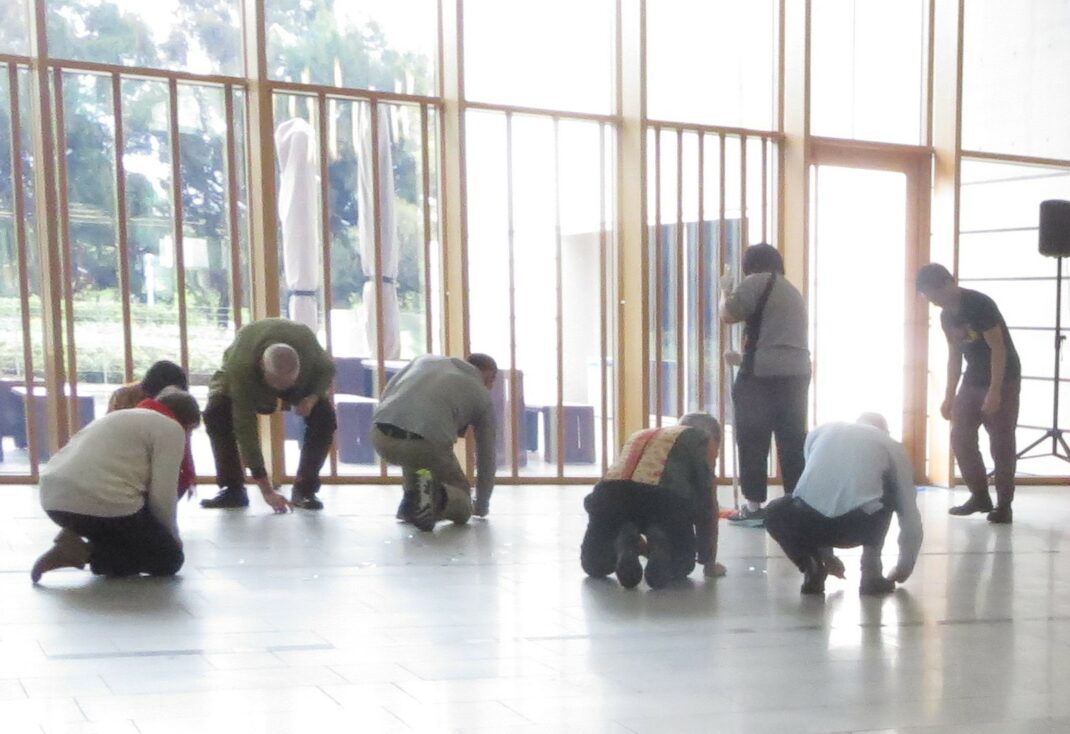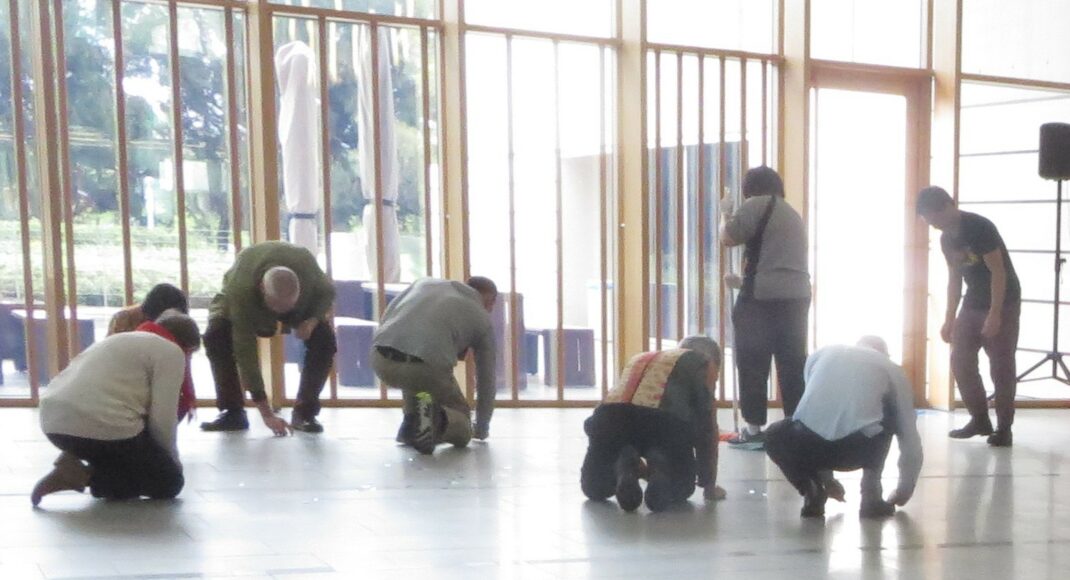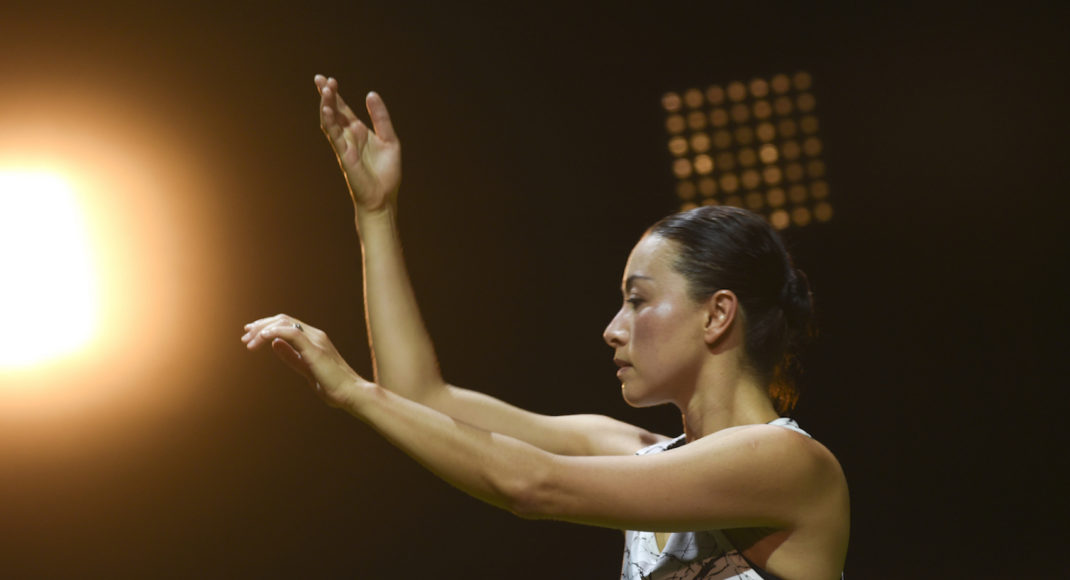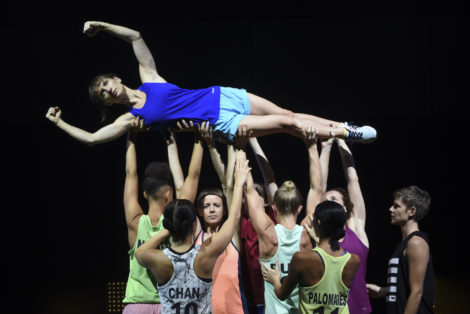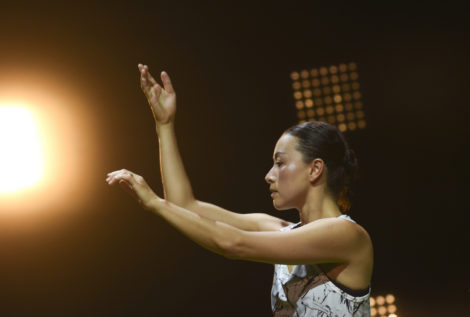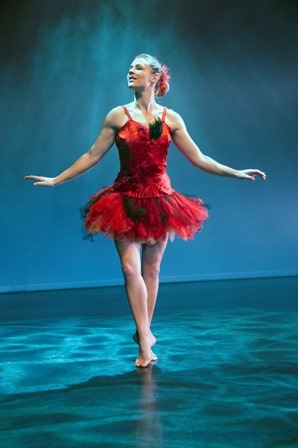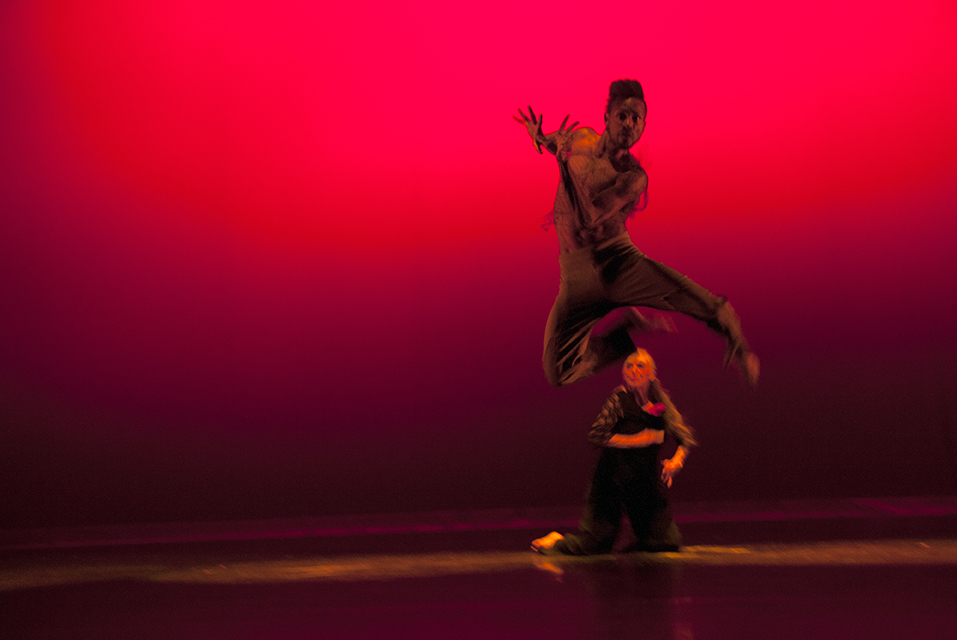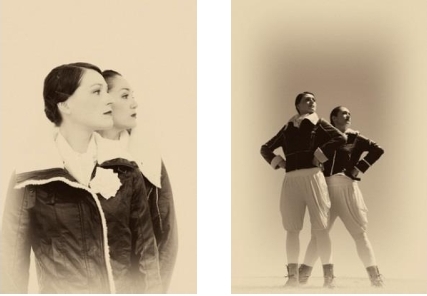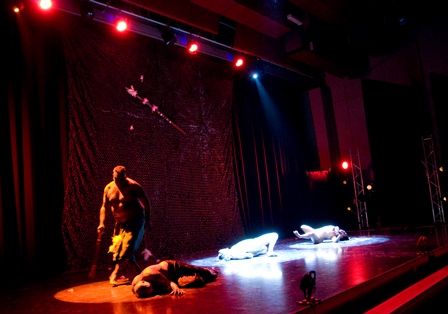22 October 2022. National Portrait Gallery, Canberra
Once again the National Portrait Gallery has hosted a dance event associated with a current exhibition, the Gallery’s Who are you? Australian Portraiture. The aim of the performance, which was composed of six short works, was ‘to animate emotions and situations reflected in the portraits, expanding on still moments captured in the frames.’
Perhaps the main feature that characterised the performance as a whole was diversity. We watched a diverse range of dance practices for a start—from K-Pop to ballet and various other dance genres, and saw performances from dancers from a range of age groups and a range of abilities. Some works appealed to me more than others, of which more shortly. But the aspect of the show that was instantly appealing (for non dance reasons) was the need to clear the floor after Gretel Burgess’ Today I am, a work dealing with life’s journey. The cleaning up was needed after the dancers released into the air handfuls of small blue squares of what looked like cellophane. Those bits of paper defied the brooms that were trying hard to sweep them up after the dancers had left the performance space and, in the end, members of the audience set about helping by picking up the bits of paper by hand. A scene from this small break in actual performance is the featured image for this post.
But to the dancing. The show opened with a performance of a new work from Miranda Wheen called A dance for the ages. Wheen was interested in creating small danced portraits of the performers, portraits that captured their dancing backgrounds. The work began with an introduction to each of the seven dancers in the form of a short pre-recorded interview. We were then able to watch as each dancer, separately and then together, gave us a physical insight into their manner of dancing. The standout dancer was Cameron Ong whose energy was unmatched and who threw himself into every movement with gusto. He stole the show I have to say and Wheen’s very thoughtful work would have had more appeal with more dancers who were able to make visible the kind of energy and commitment that Ong showed.
Of the rest of the works, two stood out for me. Firstly there was the K-Pop style The Feels with choreography from Kiel Tutin and danced by eight young female dancers. What was enticing about The Feels was the joy in moving expressed by these young women. Not being K-Pop expert myself, I have no idea whether or not the dancers were experts in the style. But I loved watching them, loved the way they were dressed, and loved how they grouped, regrouped and generally moved separately and together.
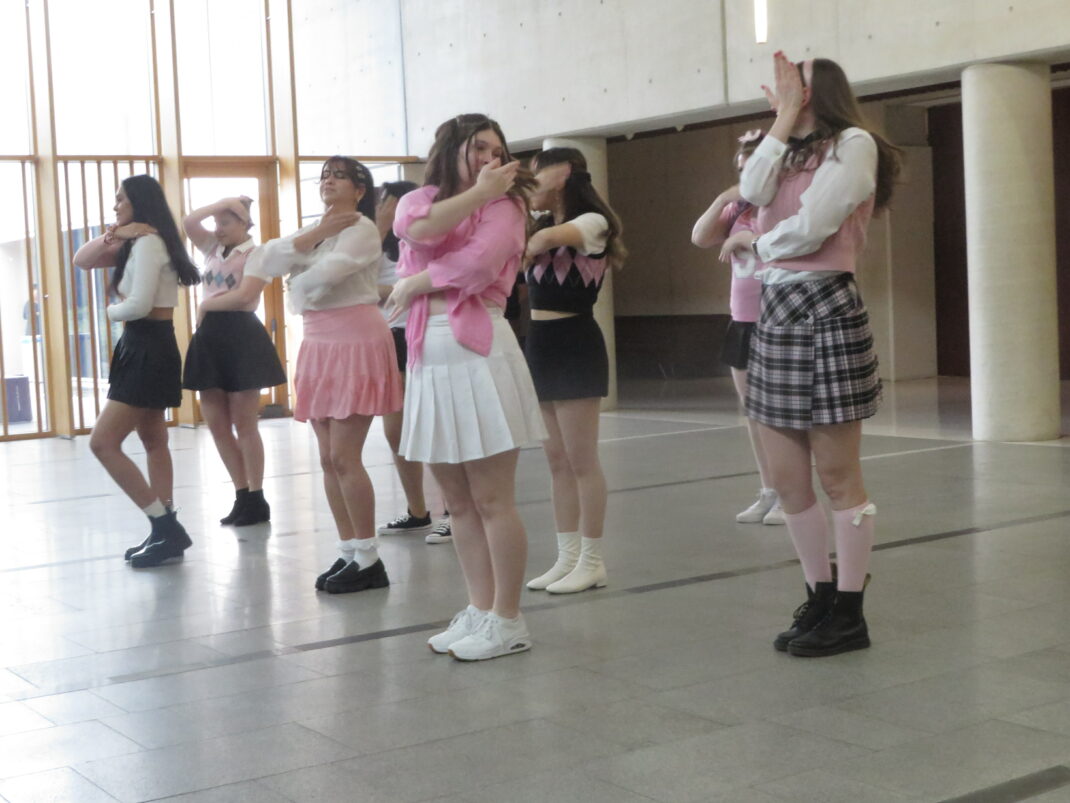
Then there was Carol Brown’s Imperium, rehearsed by Philip Piggin and performed by Cathy Coombs and Canberra’s GOLD dancers. Imperium was a strong work examining power and authority, and the use and abuse of those concepts in our everyday lives. In her program notes Brown uses the words pomp, ceremony, arrogance, sycophancy, political exile, gang warfare, domestic violence and factional plotting. Those concepts were all there in the choreography and the acting. Costuming, which I have to assume came from the wardrobes of the dancers, added to the strength of the work as did the selection of music (another example of diversity this time within one work)—excerpts from Prokofiev’s score for Romeo and Juliet and On the acceptance of imperfections (The Rite of Stravinsky) by Milos Sofrenovic. The GOLD dancers were absolutely outstanding in drawing us into the concepts Brown was examining and were exceptional at maintaining character from beginning to end.
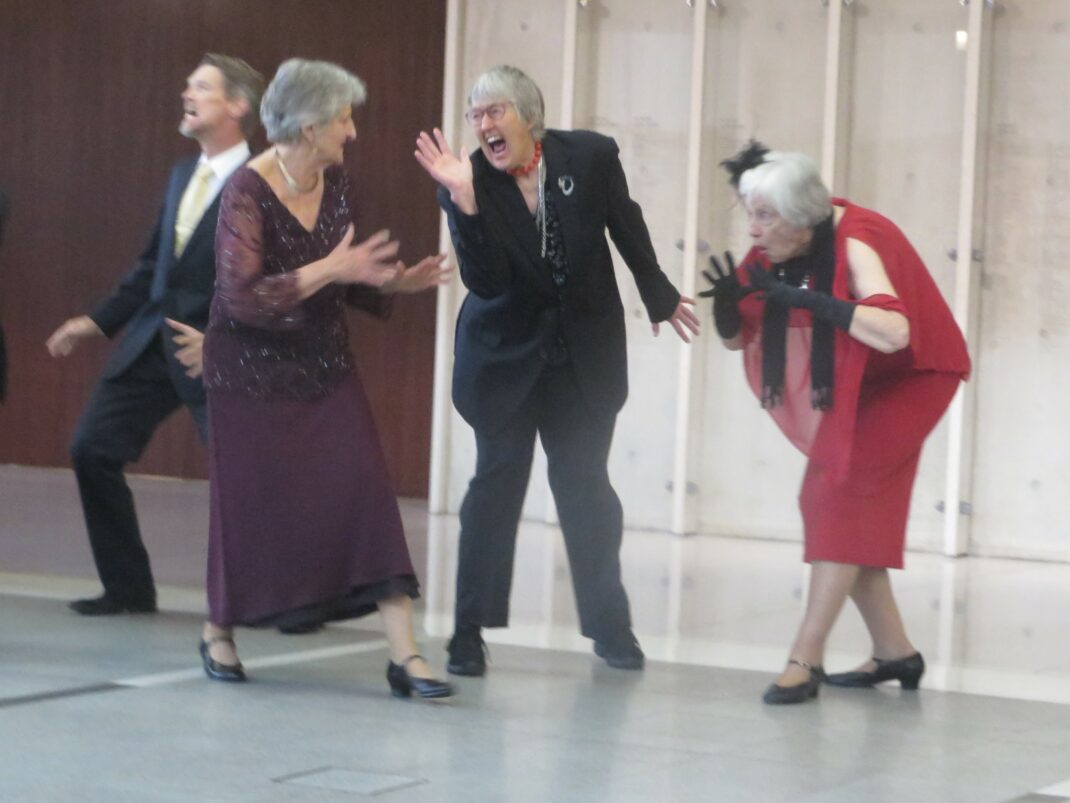
Two other works on the program were In likeness and movement choregraphed by Josh Freedman on the relationship between portraiture and ballet, and Rachael Hilton’s Opsimath never stop.
I’m not sure how closely or effectively some of the works connected with the exhibition, or indeed with the concept of portraiture. But it was more than interesting to speculate on how life experiences affect performance. The young women in the K-Pop work were clearly part of present day society and culture and took on the dance style involved with ease. On the other hand the GOLD dancers, who are part of a dance group of older individuals, have most likely experienced many of the ideas of power and authority being examined in Carol Brown’s Imperium and were thus able to give a stirring performance.
Michelle Potter, 23 October 2022
Featured image: Scene from Out of the Frame (Canberra Dance Theatre), 2020
